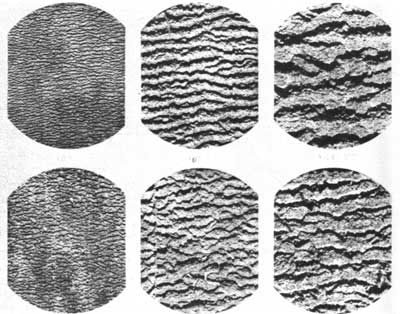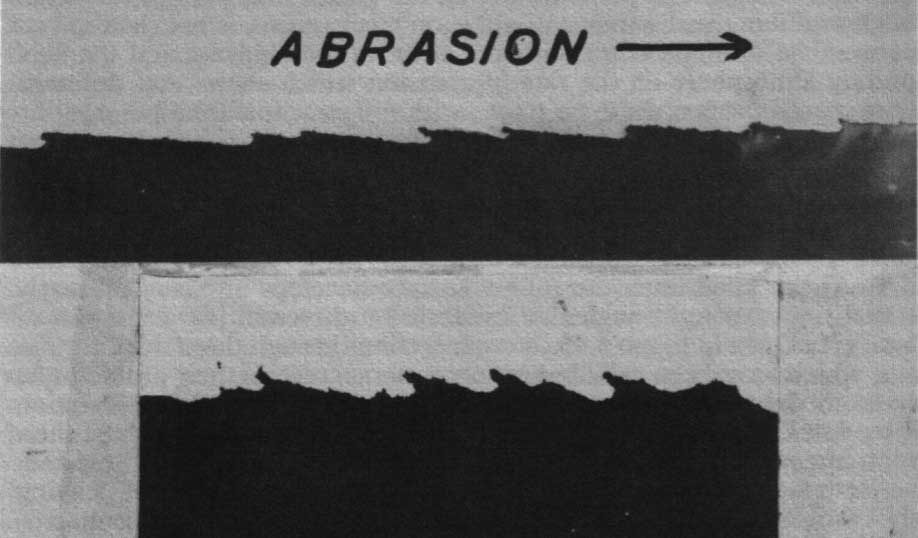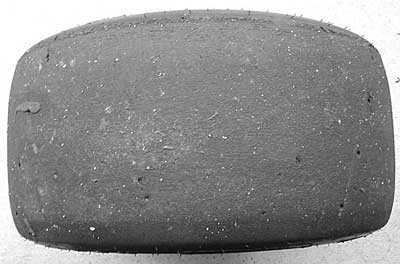Thanks! Volvo S40. I got home, took my wheels off and he had rounded off the nuts. I took a pipe wrench to them and was able to break them loose. I'm installing a camber kit so I'll be going back for another alignment soon.
Found this online
Quote: Chapter 8 of The Racing & High-Performance Tire. Abrasion and Graining
The abrasion patterns shown in the photos in Fig. 8.6 were produced by abrading two different rubber samples on different road surfaces. The abrasion profiles compare natural rubber abraded on silicon carbide cloth (the top row of photos) with a worn tire (the bottom row).
Fig. 8.6
What you see here is called graining. The cause, typically, is overly aggressive driving with a tire that is too soft and grippy for the conditions or the driver has overworked the tires before getting them up to a working temperature. Abrasion patterns are not necessarily caused by gross sliding. A requirement for the development of an abrasion pattern is "unidirectional sliding." Sliding in random directions does not produce these patterns. The orientation of the pattern is important because it indicates the direction of relative motion between the tread and the road.
Here's how that pattern gets worked into the rubber. When a new rubber sample is continuously abraded in the same direction, the rubber develops an array of nearly parallel ridges at right angles to the abrasion direction. The shape of the ridges in cross section, seen in Fig. 8.7, is saw toothed, with the teeth pointed against the direction of abrasion. During sliding, deflection waves in the rubber turn into peaks which are bent over, exposing the upstream side to abrasion. The peaks wear thinner into teeth and the tips are eventually torn off.
Fig. 8.7
Sliding on smooth tracks does not always produce abrasion. Abrasion is generally initiated by local stress concentrations at the contact between track asperities and rubber. Abrasion intensity depends on shape rather than size of the asperities. Experiments have shown that road surfaces exhibit wide variations in abrasion characteristics.
Lab experiments with abrasion in an inert atmosphere-nitrogen-show less abrasion than the same process in air. This leads to speculations that antioxidants in a rubber compound can make it more resistant to abrasion.
Unfortunately, once a graining pattern is worn into the surface of a tire it's difficult to wear the pattern away. The ridges tend to perpetuate as wear continues. Even worse, since the tread is not evenly loaded after it has been grained, the tire loses grip. It's just another way for a driver to mess up. That's why experienced drivers are so valuable.
Graining on Pavement
Fig. 8.15
![Image]()








